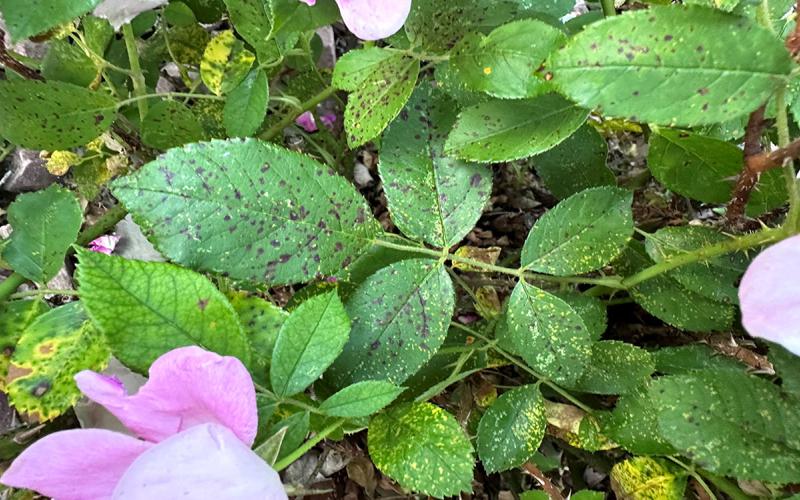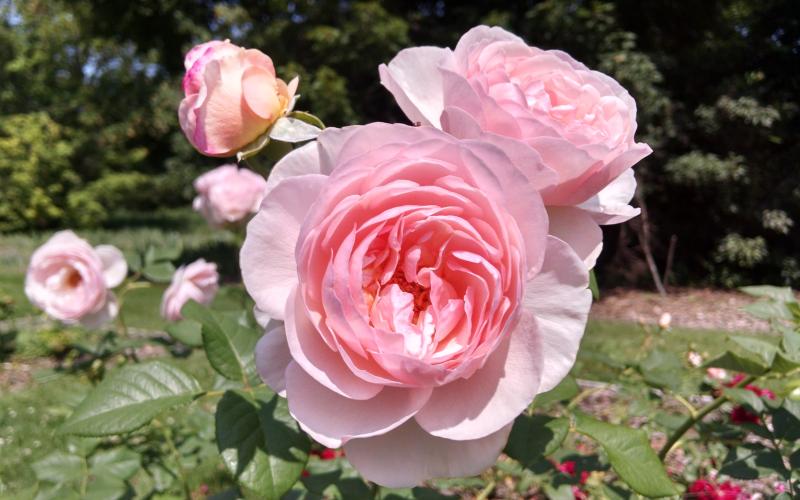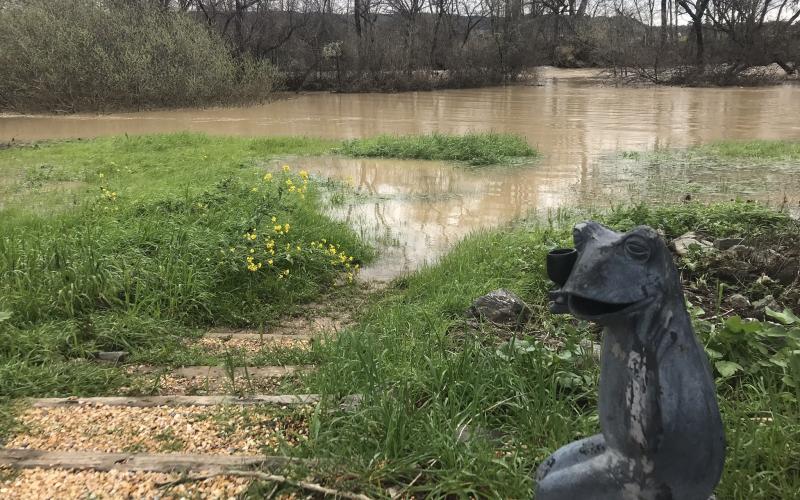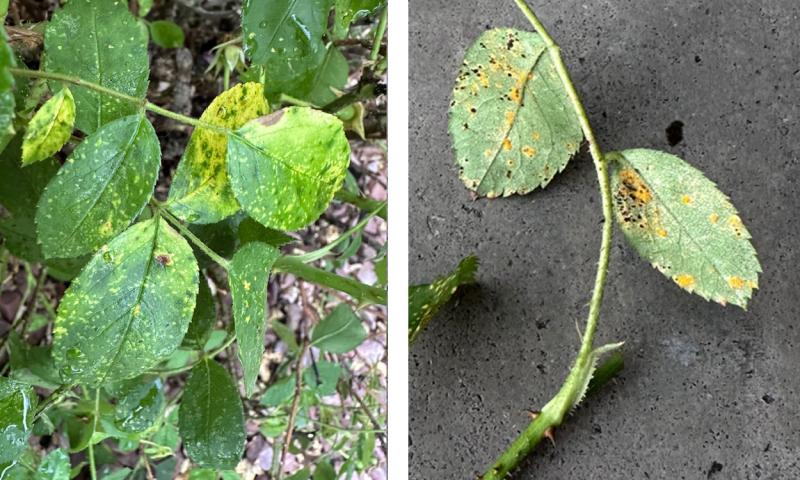
Written by Sara Ogan, SDSU Extension Horticulture Assistant, under the review and direction of Madalyn Shires, Kristine Lang, and Robin Buterbaugh.
Common Rust of Rose is a fungal disease that is found throughout the United States. Generally, the hot and dry summers in South Dakota limit the prevalence of the disease, but like other fungal diseases it surfaces when weather conditions are cool and wet.
What is Rose Rust?
Rose rust is caused by Phragmidium mucronatum or Phragmidium tuberculatum and are specific to roses. This means that rusts on row crops or other garden plants are not responsible for the rust on roses, rather indicative of a disease conducive environment. Rose rust can be introduced by purchasing infected roses or through spores carried by the wind. Rust normally begins on the lower leaves of the plant and moves upward. The two main factors that spread rust spores are moisture, when leaves are wet for two to four hours, and temperature, with an optimal temperature between 59 to 70 degrees Fahrenheit which enhances the spread of disease.
What Does Rose Rust Look Like?
Rust symptoms first appear as yellow, chlorotic spots on the upper surface of leaves that could briefly mimic viral symptoms (Figure 1). Eventually, powdery orange or rust colored pustules form on the underside of leaves (Figure 2). Stems, flowers and leaves may all be affected by rust, decreasing the plant’s vigor and affecting its appearance (Figure 3). When rust spores are being produced, touching the underside leaves will leave an orange stain on skin and tools.
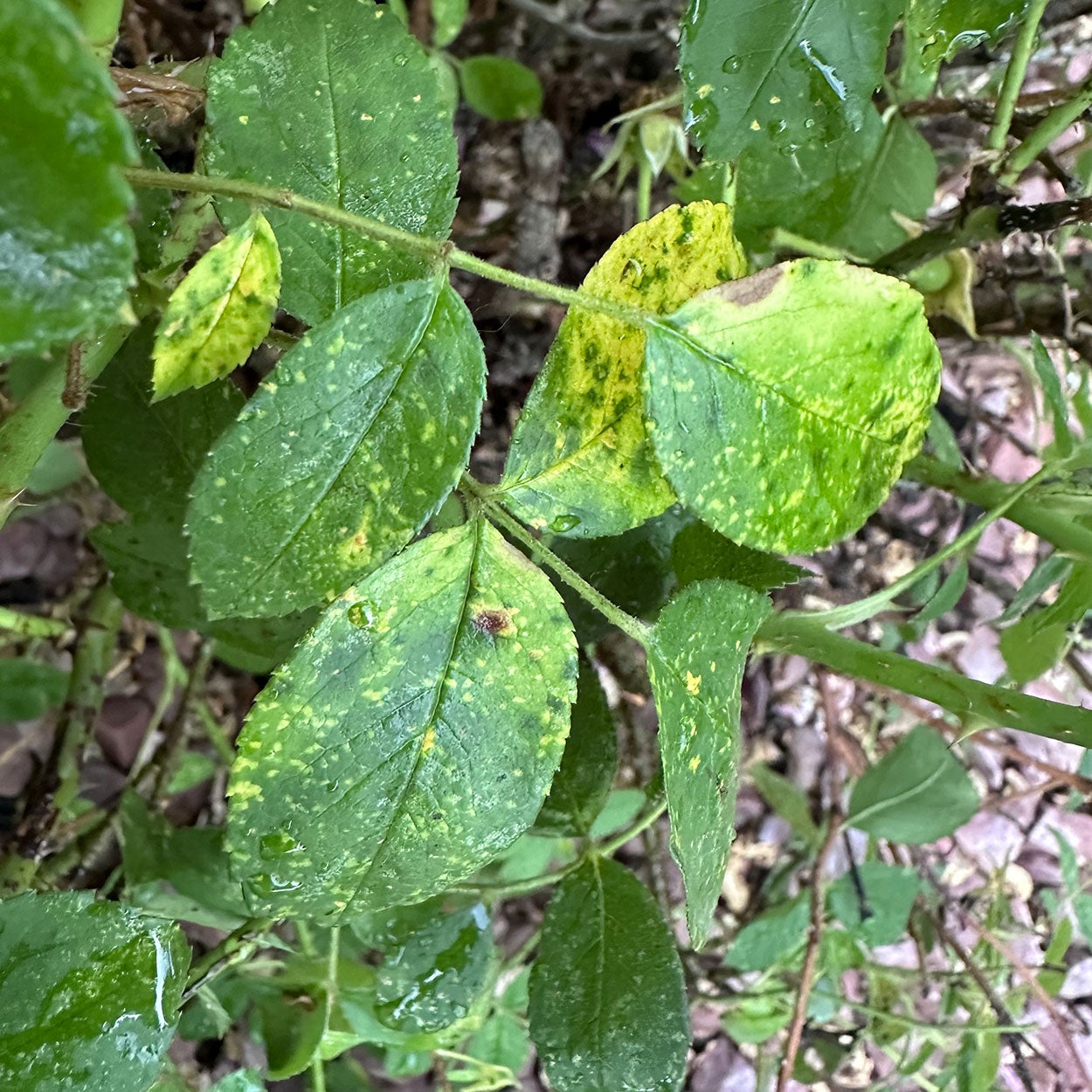
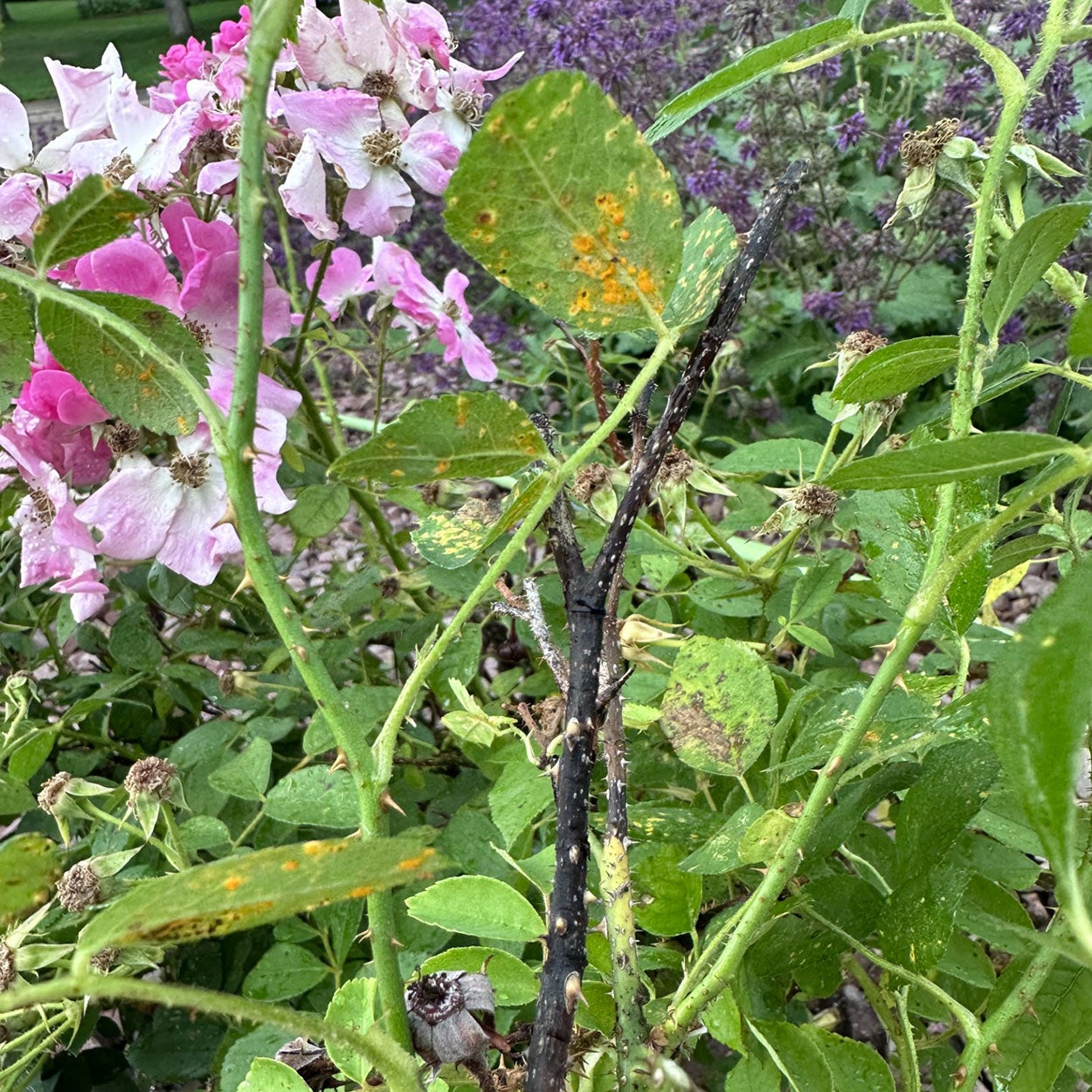
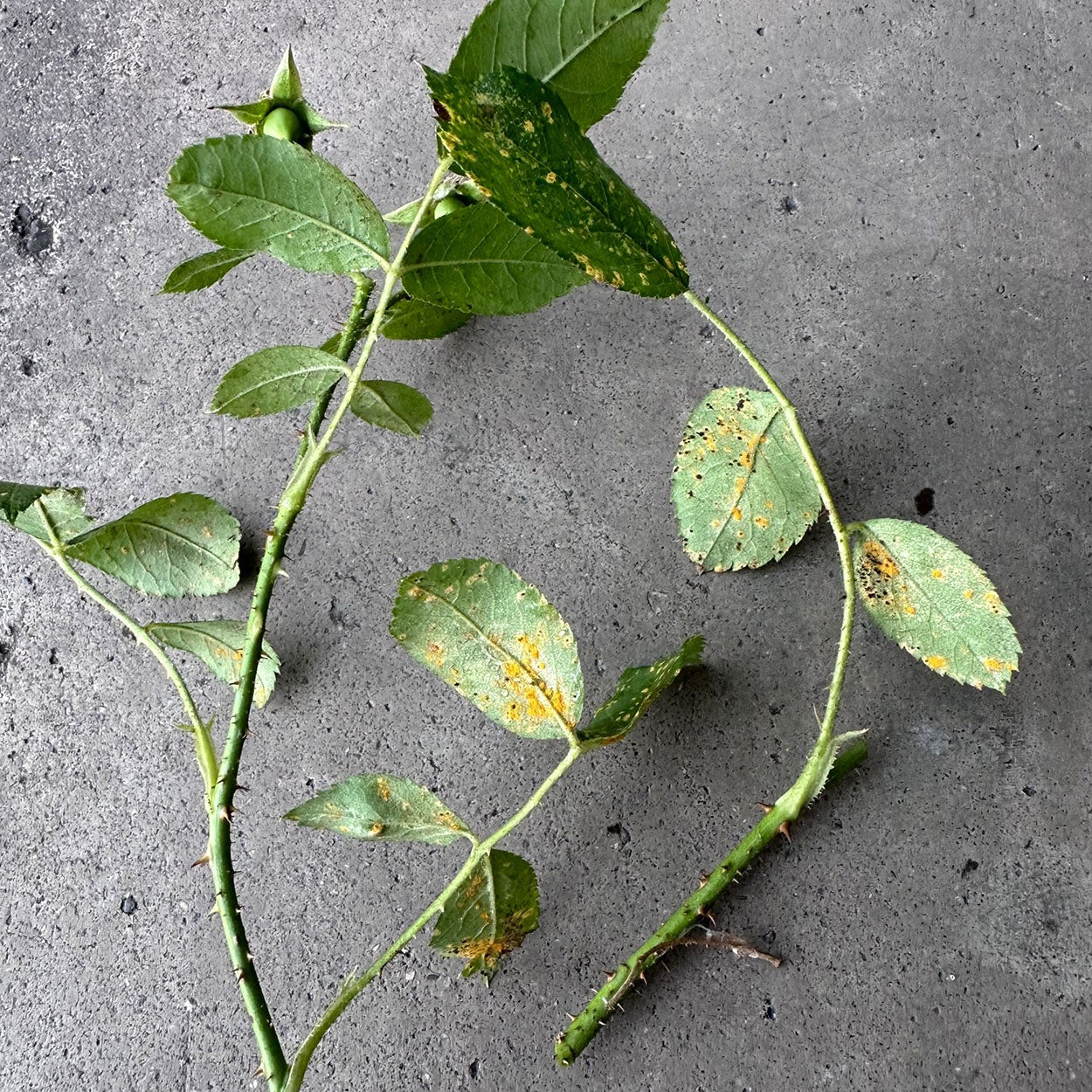
How to Manage Rose Rust
To avoid problems with rose rust, start by purchasing quality, disease free plants. Inspect new plants for symptoms of rust and consider purchasing varieties that are disease resistant. As rust is not a serious rose disease, selecting roses that are resistant to other fungal diseases, such as black spot, will help lessen the effects of rust. Proper planting, spacing, pruning, and watering at the base of roses promote dry conditions around the plants are all great ways to reduce rose diseases including rust. Overlapping and dense foliage, shade and overhead watering creates a favorable environment for fungal disease. When rust is found, remove and destroy infected leaves as they appear. Remove leaf litter and prune infected canes to reduce the overwintering of spores. Also, ensure that you sanitize tools, clothing, and hands after touching infected plant materials to reduce spread.
Good maintenance and the onset of hot, dry weather is usually enough to control rust. However, if the problem persists fungal treatments are available. Treatments need to be started early to be effective. Begin in the spring by examining leaves on roses with a history of rust. Once the first orange spots on the underside of leaves are observed, remove that leaf and spray fungicide on healthy leaves. Repeat applications may be necessary. Make sure to read and follow label directions. Fungicides with the active ingredient Myclobutanial or Azoystrobin are generally effective against rust fungi. Stop applications of fungicide whenever weather conditions are no longer disease conducive for rust development. If rose rust is persistent each year on one single plant, consider removal of that plant to reduce disease for all other roses.
Need help with a diagnosis?
If you’re having issues with black spot or other diseases, reach out to the SDSU Extension Garden Hotline or the SDSU Plant Diagnostic Clinic for identification of diseases and potential management strategies.
References and Resources
- Rose Rust, University of Wisconsin Extension.
- Rust in the flower garden, University of Minnesota Extension
- Common Rust of Roses, University of Illinois Extension.
